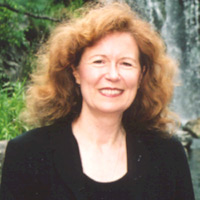
|
|
Polycontrast Interference Photography, also known as PIP, is a novel technique to visualize the whole-body human energy field, including the chakras, dantians, and accupuncture meridians. It was developed by Harry Oldfield, British scientist and inventor. The PIP method involves digital processing of light interference patterns on and around the human subject, who is best observed naked and illuminated by uniform, full spectrum light. Light reflected from the body is interpreted by the PIP software to show areas of energetic imbalance and blockages within the body, through the assignment of software-enhanced colored patterns in three dimensions. Just as x-rays are used to show internal body structures, PIP may be considered as an "e-ray" that shows the energy anatomy of the biofield.
For example, a PIP scan showing blackness in the brain stem area has been empirically correlated with depression, sleep disturbances, or Seasonal Affective Disorder (SAD). Another example of a scan of a Buddhist Lama showed a huge and vibrant aura with dancing lights all around the man, plus a remarkably symmetric pattern of bright colors revealing the chakras. Another example of a PIP scan from a person with suspected liver disease is a pronounced darkness on the right side of the upper abdomen. The PIP method will be described in detail. Various examples of PIP scans from the clinic and also from the research laboratory will be shown and analyzed. The advantages and the disadvantages of using PIP will be discussed. The future prospects of PIP for breakthroughs in subtle energy research and in various health care practices will be discussed.
Dr. Beverly Rubik is a leading scientist internationally renowned for her research exploring frontier areas of science and medicine. She specializes in subtle energies in health and healing. In 1979, Dr. Rubik earned her doctorate in biophysics at the University of California at Berkeley. She has published over 60 papers in scientific and medical journals and 2 books. Dr. Rubik serves on the editorial board of several medical journals, including Journal of Alternative & Complementary Medicine, and Evidence-Based Integrative Medicine. She was one of 18 hand-picked advisors to the original Office of Alternative Medicine at the US National Institutes of Health (NIH), and she helped launch this new federal office through its startup years, from 1992 through 1997. She also chaired an NIH panel on energy medicine. The American Medical Students Association hired Dr. Rubik to develop the first medical school curriculum on energy medicine, which was also funded by NIH. In 1996, Dr. Rubik founded the Institute for Frontier Science, a nonprofit research laboratory in Oakland, California to explore subtle energies and energy medicine. In 2002, her Institute was awarded an NIH center research grant to study the human energy field together with scientists at University of Arizona. She and her colleagues have been conducting research on Oriental concepts of subtle energy and practices such as Reiki and qigong. They are building a scientific foundation for understanding the human bioenergy field in health, healing, and optimal performance. Dr. Rubik also has a clinical practice where she advices people on alternative and complementary health practices. Beverly Rubik has appeared on numerous television programs throughout the US and worldwide, including a live appearance on “Good Morning America” (ABC-TV), where she presented her work on the human energy field in December 2000. Other Products by Beverly Rubik 1) Oriental Medicine Made Incredibly Easy with the EMAS Device
To View Comments or Join the Conversation: |
Most Viewed of all Products
Getting Started with MiniQ and full QEEG brain mapping
|

